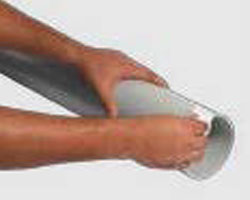
FRP MANHOLE COVER
- Weather Proof
- High Life Span
- Easy Handling
- Safe & Anti Slipper Surface
- Free From Theft
- Abrasion Resistance
- life of More than 50 Years
FRP MANHOLE COVER - 5 TON
FRP MANHOLE COVER - 3 TON

FRP MANHOLE COVER - 3 TON
| SIZE | WEIGHT | CARTOON QTY | RATE |
|---|---|---|---|
| 12 x 12 | 2.900 | 10 | 635.00 |
| 15 x 15 | 4.900 | 08 | 805.00 |
| 18 x 18 | 7.300 | 04 | 1310.00 |
| 18 x 24 | 10.200 | 04 | 1400.00 |
| 18 x 36 | 19.000 | 02 | 3810.00 |
| 21 x 21 | 10.000 | 03 | 1370.00 |
| 24 x 24 | 14.000 | 03 | 1910.0 |
| 24 x 36 | 27.000 | 02 | 5560.00 |
| 26 x 26 | 16.500 | 03 | 2610.00 |
| 28 x 28 | 19.500 | 02 | 3570.00 |
| 30 x 30 | 24.500 | 02 | 4350.00 |
Standard & Specification
PROPERTIES OF UPVC PIPES:
FRP (Fiber Reinforced Plastic) manhole covers, including those with "vigor" branding, typically exhibit several advantageous properties:
Lightweight:
FRP covers are significantly lighter than traditional materials like cast iron, making them easier to handle and transport. This feature enhances safety and reduces the risk of workplace injuries during installation and maintenance.
Corrosion Resistance:
FRP materials are highly resistant to corrosion from chemicals, water, and other corrosive agents. This makes FRP manhole covers ideal for use in environments where corrosion is a concern, such as wastewater treatment plants, coastal areas, or industrial facilities.
Strength and Durability:
Despite their lightweight nature, FRP manhole covers are engineered to be strong and durable. They can withstand heavy loads and traffic without deforming or breaking, providing long-term reliability and cost-effectiveness.
Non-Conductive:
FRP is non-conductive, meaning it does not conduct electricity. This property is crucial for safety in environments where electrical hazards may be present, such as near power lines or in industrial settings.
Anti-Slip Surface:
Many FRP manhole covers feature anti-slip surfaces to improve pedestrian and vehicle safety, especially in wet or slippery conditions.
Chemical Resistance:
FRP materials resist a wide range of chemicals, making them suitable for use in environments where exposure to corrosive substances is common, such as chemical plants or wastewater treatment facilities.
Low Maintenance:
FRP covers require minimal maintenance compared to traditional materials like cast iron. They do not rust or corrode, and their surfaces are easy to clean, reducing the need for frequent inspections and repairs.
Environmentally Friendly:
FRP materials are recyclable and have a lower environmental impact compared to materials like concrete or metal. Additionally, their lightweight nature reduces fuel consumption during transportation, further contributing to environmental sustainability.
Note: Vigor CPVC pipes means unplasticised polyinylchloride pipe, also frequently referred to as rigid PVC pipe. The word rigid does not explain its structure, but denes a property, which is self explanatory.
Installation Guide
Easy and 100% leakproof installation.
Step 1: Cutting
Measure the pipe length accurately and make a visible marking using a felt tip pen. Ensure that the pipe and fittings are size compatible. You can easily cut with a plywood cutting saw/ ratchet cutter or a wheel cutter. Cutting the pipe as squarely as possible (at 90°) provides optimal bonding area within a joint. Inspect pipe ends thoroughly prior to making a joint. If a crack or splintering is noticed cut-off a minimum of 25 mm beyond the visible crack before proceeding.

Step 2: Deburring/Beveling
Burrs in and on pipe end can obstruct flow/proper contact between the pipe and socket of the fitting during assembly and should be removed from both in and outside of the pipe. A 15 mm dia half round file/a pen knife or a deburring tool are suitable for this purpose. A slight bevel on the end of the pipe will ease entry of the pipe into the socket of the fitting socket.

Step 4: Fitting Preparation
Using a clean dry rag, wipe the dirt and moisture from the fitting sockets and pipe end. Dry fit the pipe to ensure total entry into the bottom of the fittings socket and make a visible marking using a felt tip pen.

Step 5: One Step Solvent Cement Procedure
Use only Ashirvad FLOWGUARD PLUS™ CPVC Solvent cement conforming to ASTM F-493 to ensure a perfect solvent weld Joint. When making a joint, apply an even coat of solvent cement at the end of the pipe and also inside the fitting socket. Do not use thickened or lumpy solvent cement. It should have a flow consistency like that of syrup or paint.

Step 5: Assembly
Immediately insert the pipe into the fitting socket, rotate the pipe 1/4 to 1/2 turn while inserting. This motion ensures an even distribution of solvent cement within the joint. Properly align the fittings as per patented alignment system shown with picture diagram on the right side. Hold the assembly for 30 seconds to allow the joint to setup and avoid push-out.
